5 Hidden Truths in GSC Indexing Reports Affecting Your SEO Analysis
The Page Indexing report in Google Search Console contains critical data for SEO teams, but it might be hiding key insights from you.
Indexing Insight helps you monitor Google indexing for large-scale websites with 100,000 to 1 million pages. Check out a demo of the tool below 👇.
After tracking millions of URLs with Indexing Insight, we've uncovered significant gaps in what Google Search Console tells you about your page’s indexing status.
In this newsletter, I'll reveal the top 5 things most SEOs don't know about the Page Indexing report and how these hidden insights could be affecting your SEO analysis.
So, let's dive in.
🕷️ 1. 'Crawled - currently not indexed' often means 'previously indexed'
The current definition of 'crawled - currently not indexed' is misleading.
If you search for 'crawled - currently not indexed', most articles define this status as Google having crawled the page but not yet chosen to index it.
This comes directly from Google's documentation:
“The page was crawled by Google but not indexed. It may or may not be indexed in the future; no need to resubmit this URL for crawling”.
Page Indexing report, Google Search Documentation.
However, based on data from Indexing Insight, this definition is incomplete.
Our first-party data shows that 70-80% of pages with the 'crawled—currently not indexed' status in GSC have historically been indexed by Google.
And these pages have been actively removed by Google from its index.
This means when you see this status, you're not looking at pages waiting to be indexed. In fact, you're looking at pages Google has actively removed from its search results.
For one client alone, we found nearly 130,000 pages with what should be called 'crawled - previously indexed' status. That's 13% of their monitored pages that Google has actively removed from serving in search results.
This data helped the client understand they needed to take action. Not waiting for indexing.
Learn more by reading What is ‘Crawled - Currently Not Indexed’?.
2. Google can 'forget' URLs have been previously crawled and indexed
The coverage state 'URL is unknown to Google' is even more misleading than you might think.
Google's official documentation states:
"If the label is URL is unknown to Google, it means that Google hasn't seen that URL before, so you should request that the page be indexed. Indexing typically takes a few days."
URL Inspection Tool, Search Console Help
But our data tells a different story. Many pages labeled as 'URL is unknown to Google' have actually been crawled and indexed before.
Gary Illyes from Google confirmed this phenomenon on LinkedIn, explaining that Google's systems can "forget" URLs as they purge low-value pages from their index over time.
The signals Google collects about a page can eventually lead to it being forgotten entirely.
For one website monitoring 1 million URLs, 16% of URLs were labelled 'URL is unknown to Google' and many of these had search performance data proving they were previously indexed.
Based on this first-party data, ‘URL is unknown to Google’ should be split into two different definitions:
URL is unknown to Google: The URL has never been discovered or crawled by Googlebot.
URL is forgotten by Google: The URL was previously crawled and indexed by Google but has been forgotten.
This distinction is crucial for understanding the true health of your website in Google's index.
Learn more by reading What is ‘URL is unknown to Google’?.
3. Google Search Console misreports 'URL is unknown to Google' pages in ‘Discovered - currently not indexed’
When Google actively deprioritizes your pages, GSC doesn't tell you the whole truth.
Our analysis found that 94% of pages that should be labeled 'URL is unknown to Google' are instead grouped under the 'Discovered - currently not indexed' report in GSC.
This misreporting isn't a bug. It's by design.
When you inspect these URLs individually using the URL Inspection tool, they show the 'URL is unknown to Google' status, contradicting what the Page Indexing report shows.
Why does this matter?
Because pages with 'URL is unknown to Google' status have zero crawl priority in Google's system, according to Gary Illyes.
When you can't see which pages have this status, you can't take appropriate action to address the underlying quality issues.
By grouping these URLs under 'Discovered - currently not indexed', GSC leads you to believe you have a discovery problem when you actually have a quality problem that's so severe Google has chosen to forget your content entirely.
Learn more by reading How Google Search Console misreports ‘URL is unknown to Google’.
4. Index coverage states reveal your site's crawl priority
The various index states in GSC aren't just status labels, they're indicators of how Google prioritizes crawling your site.
Based on data from Indexing Insight and confirmation from Google's Martin Splitt, we can map the index coverage states to Googlebot's crawl, render, and index process:
'Submitted and indexed': Higher priority, actively shown in search results
'Crawled - currently not indexed': Medium priority, stored but not served
'Discovered - currently not indexed': Low priority, on the crawl list but deprioritized
'URL is unknown to Google': Zero priority, completely forgotten
Pages can move backwards through these states over time.
This reverse progression through index states often accelerates after Google core updates, indicating system-wide reprioritization of what's worth crawling and indexing.
When a page moves from 'Submitted and indexed' to 'URL is unknown to Google,' it shows that Google's systems have determined that it has such a low value that it's not worth remembering.
Learn more by reading How Indexing States Indicate Crawl Priority and How Google Core Updates Impact Indexing.
5. URL Inspection tool and Page Indexing report conflict
When you see conflicting data between the URL Inspection tool and the Page Indexing report, you should always trust the URL Inspection tool.
Here's why:
Page Indexing report updates only twice a week (Sundays and Wednesdays)
The URL Inspection tool pulls live information directly from Google's index
The Google Search Central team has confirmed that the URL Inspection Tool is the most authoritative source for indexing data and should be considered the source of truth when conflicts arise.
This means that for truly accurate indexing analysis, you need to inspect URLs individually or use the URL Inspection API, which is what Indexing Insight does to provide daily monitoring.
Learn more by reading URL Inspection Report vs Page Indexing Report: What's the difference?.
What does this mean for you (as an SEO)?
It completely changes how you should approach SEO analysis:
When you see 'crawled - currently not indexed', don't assume these pages are waiting to be indexed. Most likely, Google has actively removed them from the index.
After Google Core updates, check both your rankings AND your indexing status. Core updates don't just affect rankings — they actively reprioritize what's worth crawling and indexing.
Look beyond the surface-level Page Indexing report. The most important insights come from tracking coverage state changes over time, which GSC doesn't show.
Always verify with the URL Inspection tool for important pages with indexing issues rather than trusting the Page Indexing report.
If you find many important pages with 'URL is unknown to Google' or 'Discovered—currently not indexed' status, this indicates severe quality issues that need to be addressed before Google will consider re-indexing them.
These nuances become even more critical for sites with 100,000+ pages as the scale makes manual analysis through GSC virtually impossible.
📌 Summary
The Page Indexing report in Google Search Console doesn't tell the full story about your website's indexing health.
By understanding the true meaning behind coverage states, the misreporting of 'URL is unknown to Google', and how index states indicate crawl priority, you can develop a more accurate picture of how Google views your content.
Importantly, when Google core updates roll out, they don't just impact rankings.
They actively cause Google's systems to reprioritize what is worth crawling and indexing, potentially removing large numbers of pages from the index entirely.
Hopefully, this newsletter has inspired you to examine your page indexing report with a new perspective and identify which pages are truly at risk in Google's indexing system.
📊 Interested in Google index monitoring?
Indexing Insight is a tool for monitoring Google indexing at scale. It is for websites with 100K—1 million pages.
Check out the demo of the tool using the link below.


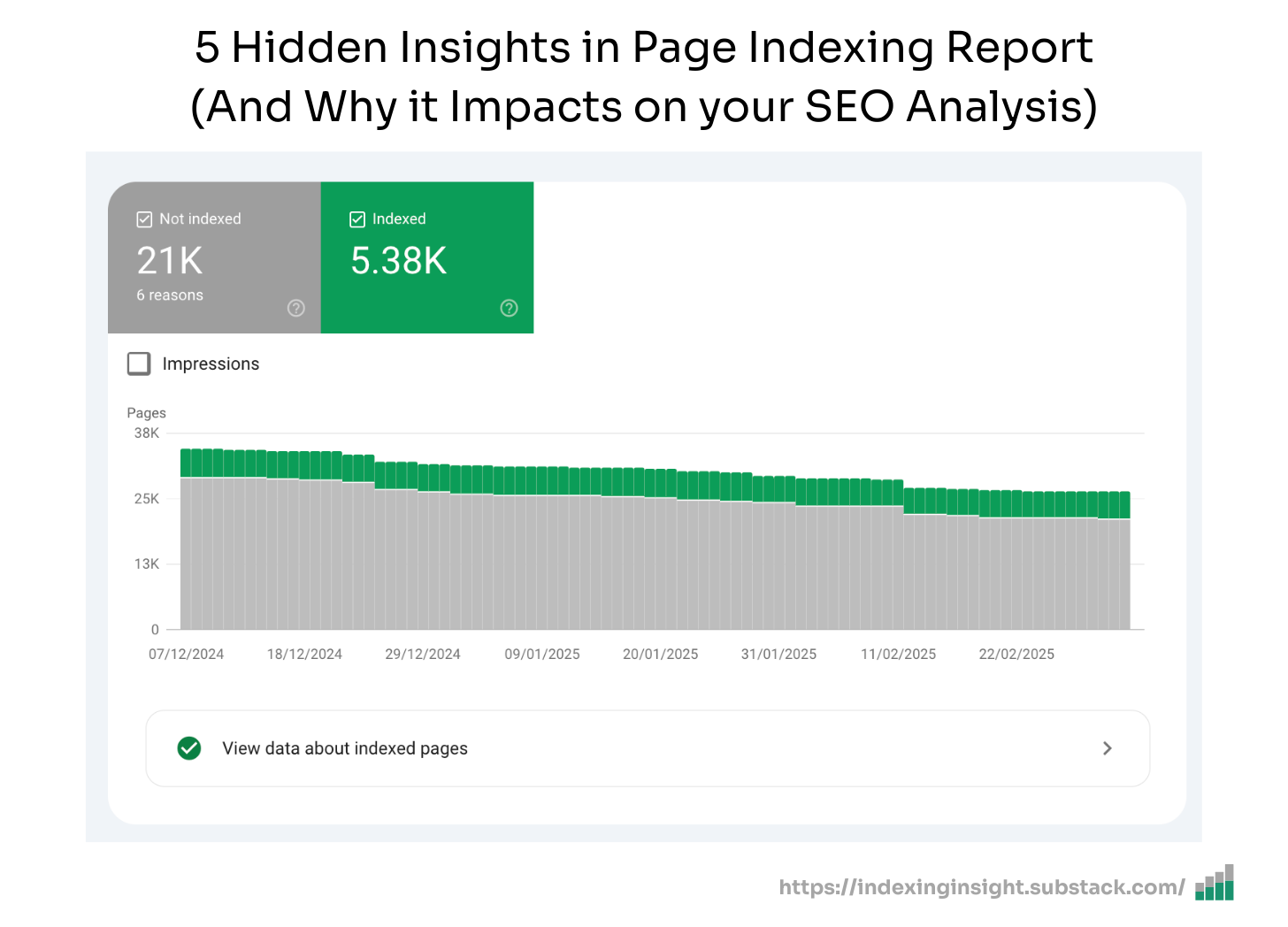
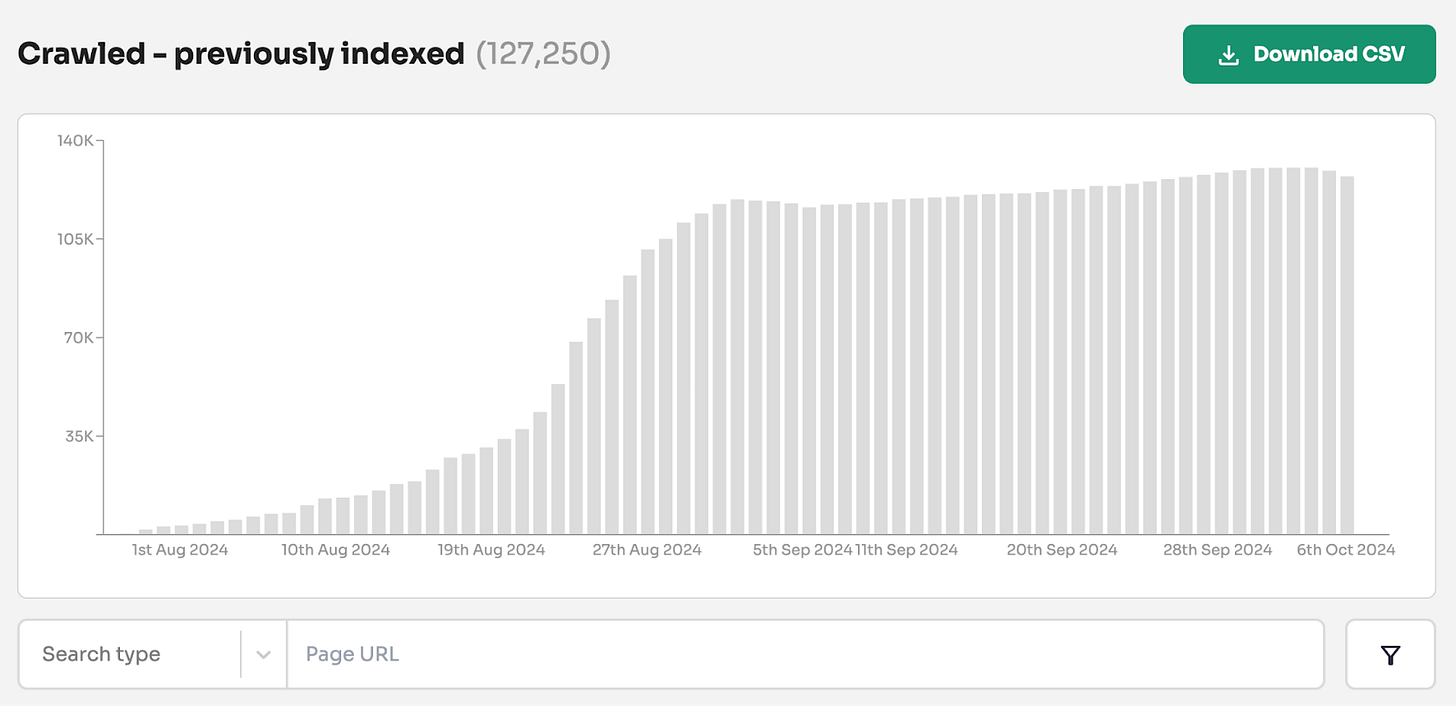

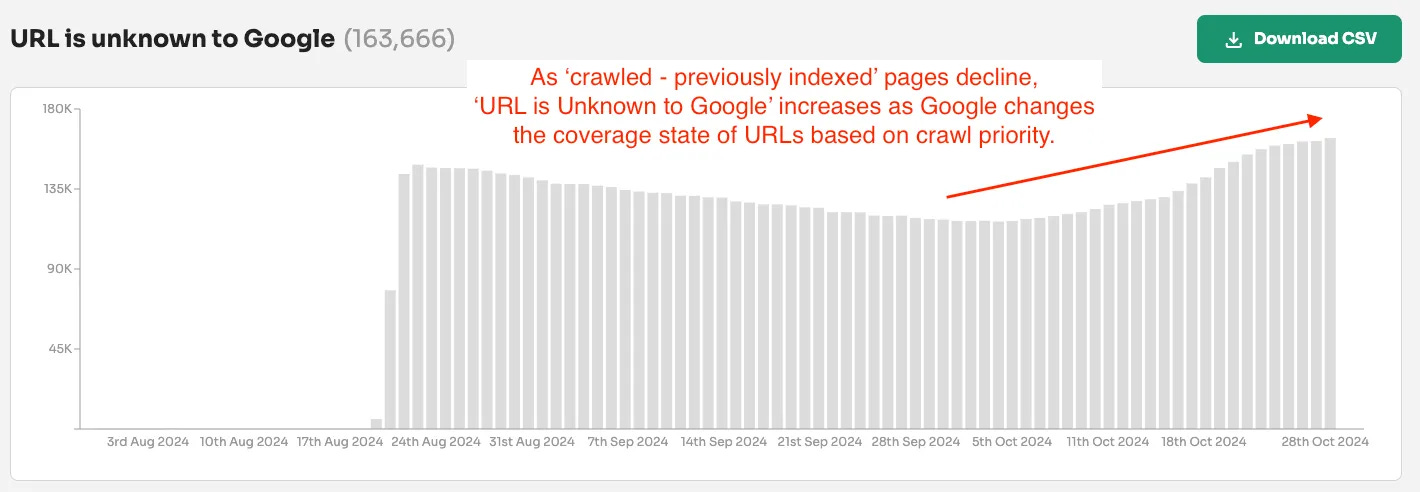
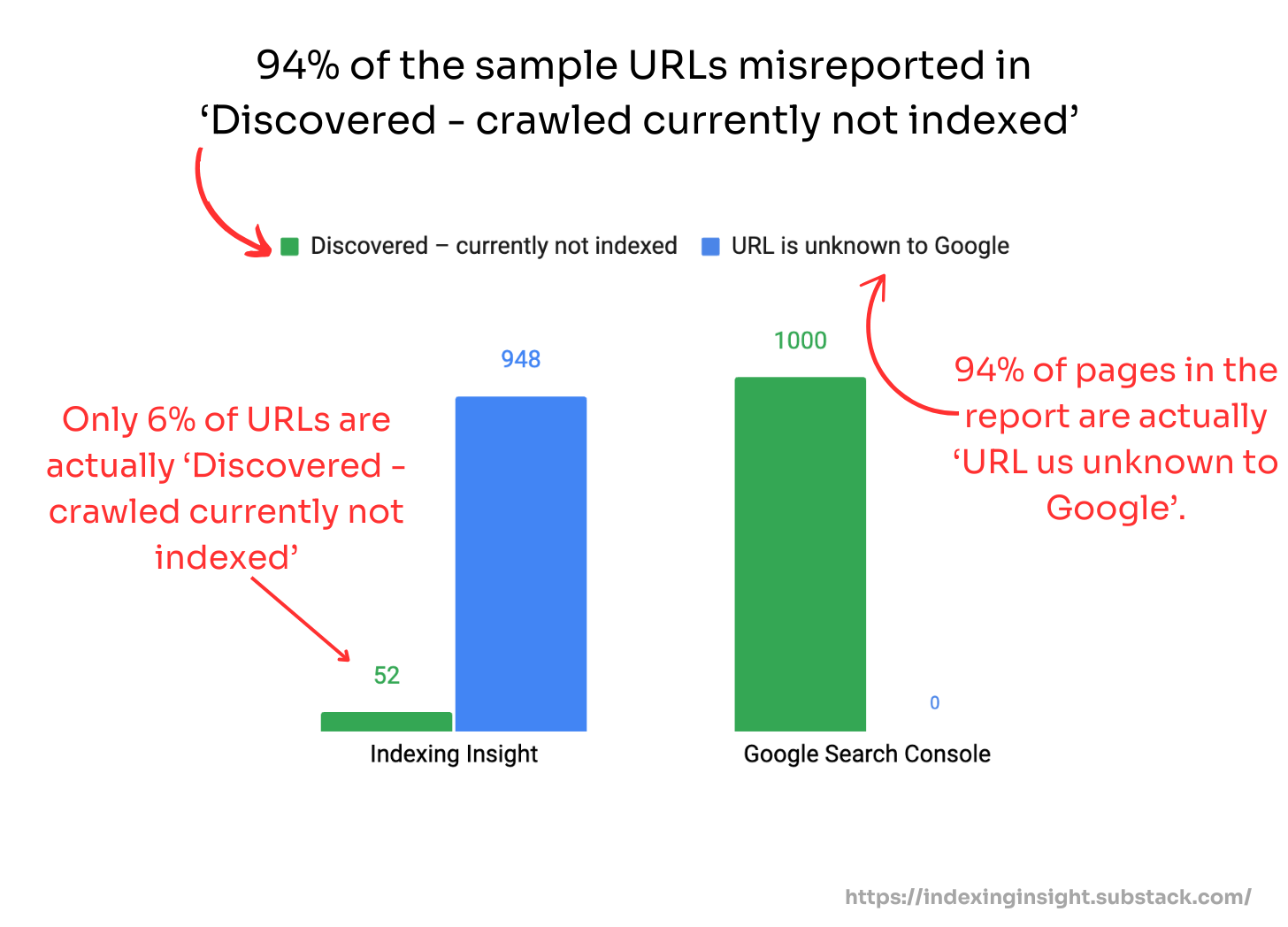


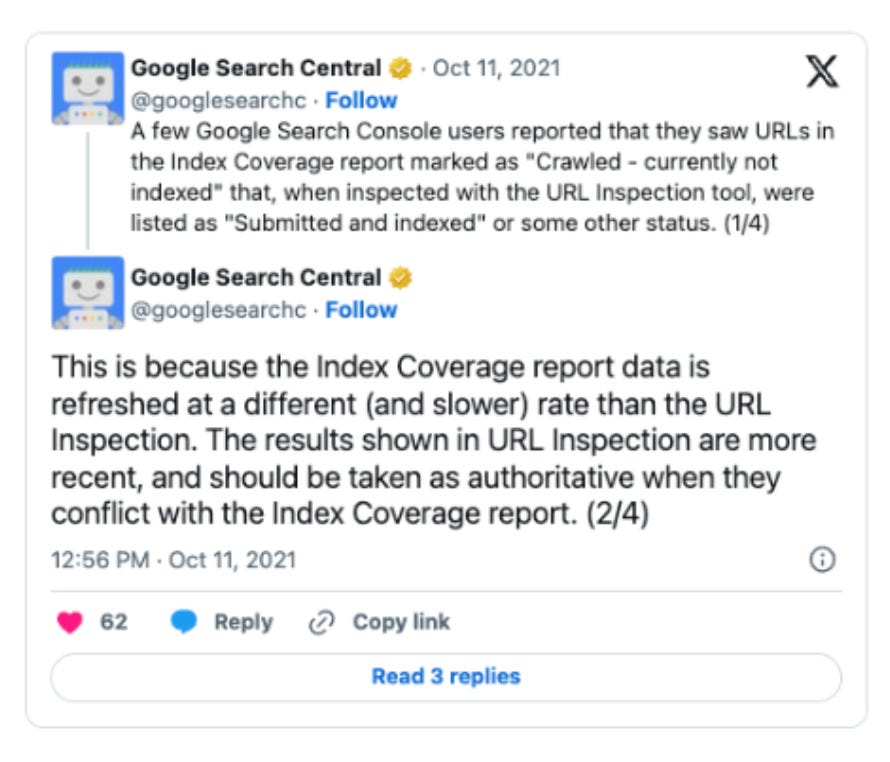

Good insights, Sara, thanks for sharing